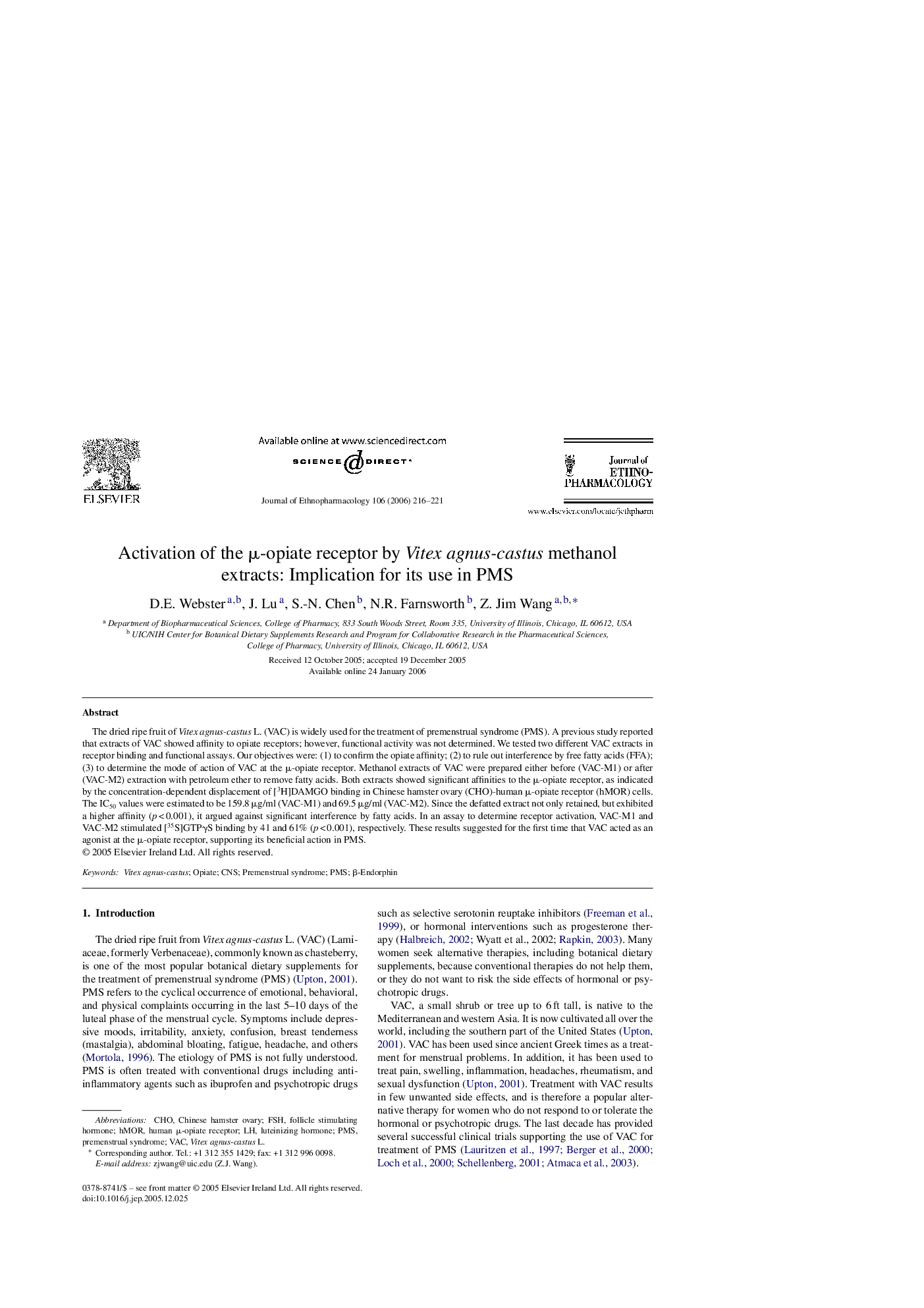| Article ID | Journal | Published Year | Pages | File Type |
|---|---|---|---|---|
| 2548562 | Journal of Ethnopharmacology | 2006 | 6 Pages |
The dried ripe fruit of Vitex agnus-castus L. (VAC) is widely used for the treatment of premenstrual syndrome (PMS). A previous study reported that extracts of VAC showed affinity to opiate receptors; however, functional activity was not determined. We tested two different VAC extracts in receptor binding and functional assays. Our objectives were: (1) to confirm the opiate affinity; (2) to rule out interference by free fatty acids (FFA); (3) to determine the mode of action of VAC at the μ-opiate receptor. Methanol extracts of VAC were prepared either before (VAC-M1) or after (VAC-M2) extraction with petroleum ether to remove fatty acids. Both extracts showed significant affinities to the μ-opiate receptor, as indicated by the concentration-dependent displacement of [3H]DAMGO binding in Chinese hamster ovary (CHO)-human μ-opiate receptor (hMOR) cells. The IC50 values were estimated to be 159.8 μg/ml (VAC-M1) and 69.5 μg/ml (VAC-M2). Since the defatted extract not only retained, but exhibited a higher affinity (p < 0.001), it argued against significant interference by fatty acids. In an assay to determine receptor activation, VAC-M1 and VAC-M2 stimulated [35S]GTPγS binding by 41 and 61% (p < 0.001), respectively. These results suggested for the first time that VAC acted as an agonist at the μ-opiate receptor, supporting its beneficial action in PMS.
